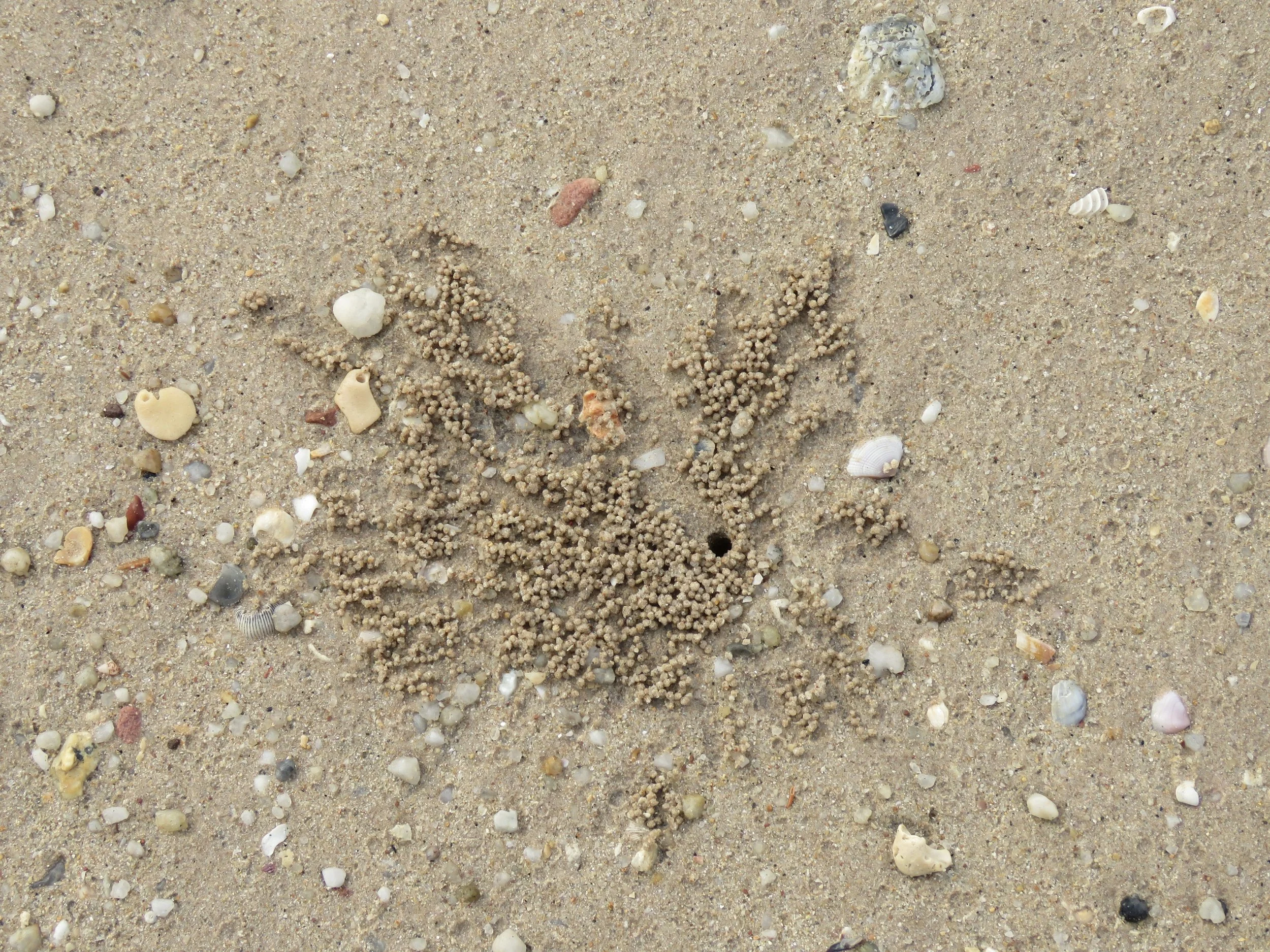We almost never go back to a place we have visited before. But we did make an exception for our beloved island of Langkawi in Malaysia. Years ago, when I did author visits to international schools in Kuala Lumpur, we asked teachers what their favourite holiday destination was. And we were told ‘Langkawi!’ It took us years to actually get there but it was love at first sight. Langkawi is gorgeous, with friendly people, and inexpensive enough to spend a good part of winter on the beach.
“Our” beach.
The first time we stayed here, we opted to stay on the north end of the island, which was a good choice for us because it is not touristy and quiet with mostly local eateries rather than big hotels. We had a lovely little house, which was not available for most of this winter so we stayed at a fabulous ‘hotel’: Labu Labi. A row of cottages lines the beach. Our room is one large room with two big beds and a bathroom. We have a small fridge and a water kettle. We bought along some bowls and plates and we’re all set. We also have our own, very private patio with chairs right on the beach but under a shading roof.
I first wrote about the island in these blog posts: Legendary Langkawi and Winter On The Beach. You can also read our blog about local food.
Part of the Geo Park.
And we shared what we learned about the unusual wildlife. That might be enough reading for you but I’d love to share a bit more about the island… It is interesting that Langkawi has been designated a UNESCO Global Geopark. The UNESCO website explains that “Global Geoparks are single, unified geographical areas where sites and landscapes of international geological significance are managed with a holistic concept of protection, education and sustainable development.”
Across the island there are different sites that are part of this ‘park’ - places you can visit to learn more about nature, places that are being protected but also developed in a sustainable manner. One of the first of these sites we visited, was Seven Wells, or Telaga Tujuh, waterfalls in the north end of the island. These are huge falls with smooth rock puddles for bathing and cooling off. In most parks we found that the natural feature was wonderful but the manmade park around it was in need to repair and maintenance.
The other waterfalls we visited were Temerun Waterfalls in the north end, which were the least worthy of visiting with a badly maintained trail. And my favourite: Durian Perangin Waterfall. Again the park was in dire need of maintenance with broken railings, stones in the path missing and even a bridge that was falling down. But this waterfall is gorgeous, and has a large, cool pool for swimming at the bottom making it a lovely place to visit on a hot day.
Rubber tree
And all days are hot days here - for our entire stay the temperature is between 30 and 32ºC. We had a few little rain showers early in January but no rain after that. We also had a few windy nights in late February but by and large blue skies and sunshine.
We visited the gorgeous beaches along the north end of the island: Skull Beach seems to be the local favourite. This is a small but gorgeous white sand beach flanked by palm trees. The stuff you see in tourist brochures. Lots of monkeys along the road and in the parking lot so keep your picnic in a safe place! Black Beach is also nice and easier to reach.
Our hosts took us on a walk around huge rice paddies and along mangroves. There is still so much wilderness and green countryside on this island. We also joined the local expat hiking club one night for a brisk walk through a rubber plantation where skinny trees were outfitted with little drips to catch the rubber - much like maple syrup. This hiking club meets every other Friday for a walk in a different part of the island, followed by dinner at a local eatery. Monkeys were swinging in the trees as we passed. The only thing not great is the amount of garbage people discard along the roads and motorbike paths….
Kees enjoys long walks along the beach of the Andaman Sea even though the temperatures soar to over 30ºC. I enjoy a daily swim. Or two. The water temperature is usually more than body temperature. And the beach is spotless. A civic cleaning crew works the entire length each morning with rakes, cleaning up even the leafs. In our next post, we’ll take a boat into the mangroves.
RESOURCES:
Our hotel Labu Labi







